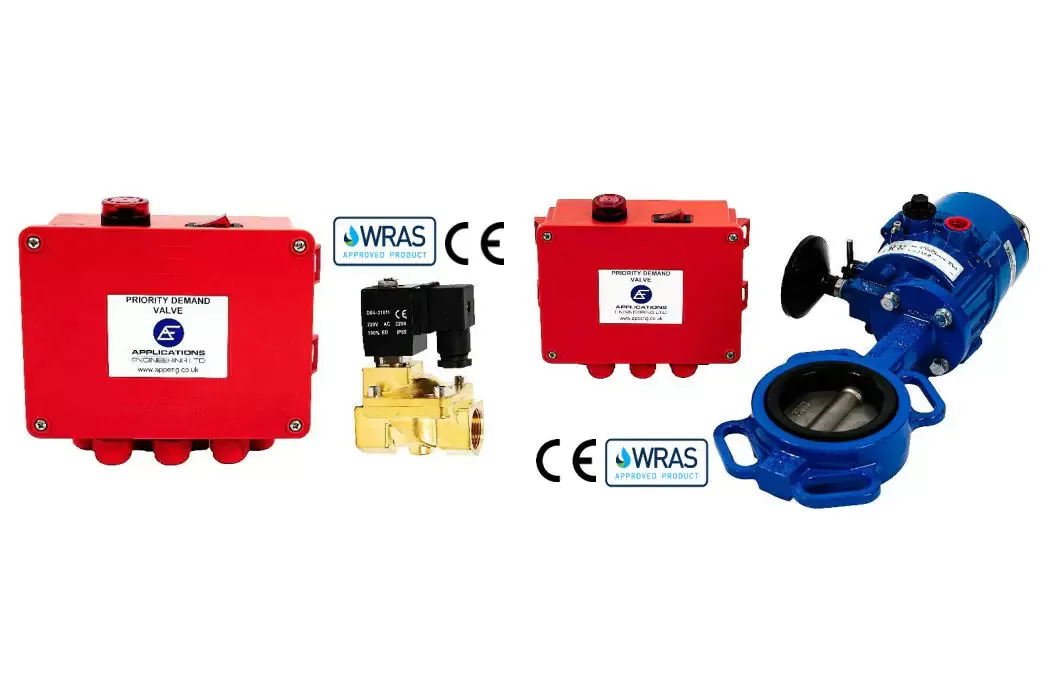 Add My Company
Add My Company

In the realm of commercial fire safety, staying ahead is essential. As regulations evolve and technology advances, adopting cutting-edge fire protection products that meet and exceed standards is crucial. Among these innovations, the Fire Priority Demand Valve (PDV) stands out as a transformative addition to modern fire sprinkler systems.
Exceeding BS 9251 Standards
The importance of Fire Priority Demand Valves has grown significantly following the 2021 update to BS 9251, the British Standard for sprinkler systems in residential and domestic settings. These valves are integral to ensuring combined fire sprinkler systems comply with the rigorous requirements of this updated standard.
The introduction of Category 4 in BS 9251:2021 focuses on improving fire safety in taller buildings—those exceeding four storeys or 18 metres in height. This category requires a minimum sprinkler operation time of 60 minutes with a discharge density of 2.8mm/min. Meeting these demands without a PDV often results in oversized valve systems, which can compromise water quality and inflate costs.
Enhancing Water Quality and Efficiency
One of the key benefits of Fire Priority Demand Valves is their ability to redirect water flow exclusively to sprinkler outlets during activation. This feature ensures:
- Improved Water Quality: By minimising the volume of stored water, the risk of stagnation is reduced, maintaining compliance with BS EN 806-2:2005 guidelines, which recommend a maximum storage volume of 80 litres per person.
- Cost Savings: Smaller break tanks can be used, lowering both initial capital expenditure and ongoing maintenance costs.
- Compact System Design: Combined domestic and sprinkler booster pump sets can be reduced in size, making installations more space-efficient and economical.
Guaranteeing Water for Fire Suppression
Fire Priority Demand Valves enhance reliability by integrating with low-water-level alarm switches. This ensures that even during high water usage or emergencies, a sufficient volume of water remains available for fire suppression. By halting domestic water flow when critical levels are reached, these valves prioritise sprinkler operations, bolstering safety and system dependability.
Types of Fire Priority Demand Valves
Choosing the right PDV depends on the system requirements. Common options include:
- Electromagnetic Solenoid Valves: Suitable for smaller sizes (DN50 or less), these are cost-effective but may generate heat during operation and risk hydraulic shock in domestic risers.
- Rotary Valves: Ideal for larger systems, such as butterfly valves, offering:
- No heat generation during use
- Battery backup for fail-safe operation during power outages
- Regulated refill rates, minimising hydraulic shock risks
Advanced Features and Self-Testing
Modern Fire Priority Demand Valves often incorporate advanced control systems with features such as:
- Self-Testing Programmes: Daily automated checks ensure the valve remains operational without disrupting the domestic water supply, significantly reducing the risk of failure in emergencies.
- Integration with Building Management Systems: For enhanced monitoring and control, supporting proactive maintenance and swift response.
The Applications Engineering Advantage
At Applications Engineering, we recognise the critical role that Fire Priority Demand Valves play in effective fire safety systems. Our range of PDVs is tailored to meet diverse building requirements, offering features such as:
- WRAS Approval: Ensuring compatibility with potable water systems
- Customised Options: Solenoid and rotary valve designs to suit various applications
- Advanced Controls: Including self-testing capabilities for seamless maintenance
Our expert team is dedicated to delivering top-quality PDVs that prioritise both safety and efficiency. By carefully selecting the right valve for your system, building owners and fire safety professionals can achieve optimal protection and peace of mind.
To discover how our Fire Priority Demand Valves can enhance your fire safety system or to discuss your specific requirements, contact the experts at Applications Engineering today.
For more information on The Advantages of Fire Priority Demand Valves talk to Applications Engineering Limited

